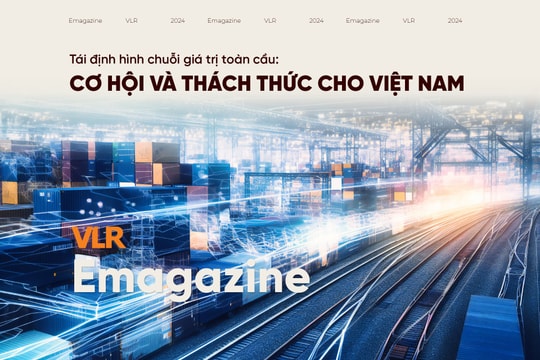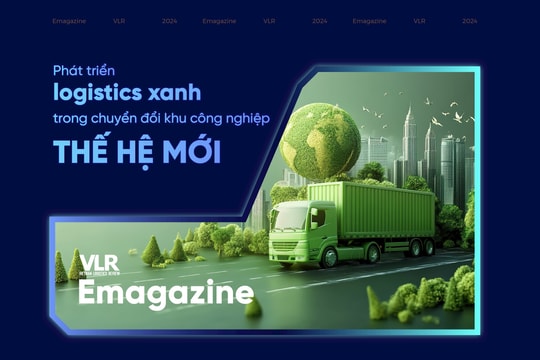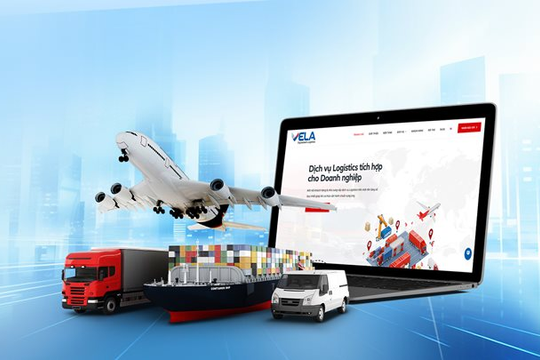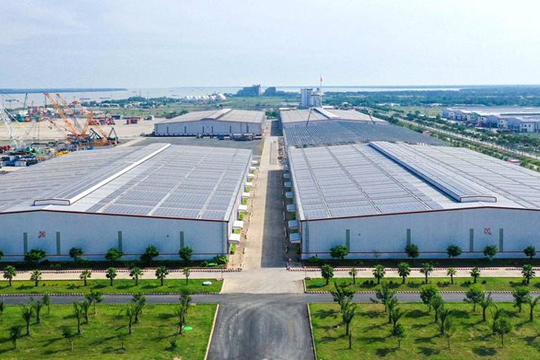(Vietnam Logistics Review) Two remarkable advancements in the world’s maritime sector are the increase in vessels’ capacity and quick advancement in stevedoring technology. Vessels are larger and stevedoring capacity is better.
Large capacity helps reduce shipping feel; and stevedoring technology helps set free vessels quickly at ports. And thus, it is necessary to have deep water ports to receive larger and larger vessels.
PLANNING AND REALITY
BR-VT’s natural conditions are suitable to develop deep-water ports – the world’s trend in international transport.
In planning, a series of industrial parks is located along the port system from PhuMyto Long Son. They are My Xuan A, My Xuan A2, Phu My 1, Phu My 2, Phu My 2 extended, Phu My 3, CaiMep, and Long Son oil industrial park. The planning is suitable to the purpose of connecting the ports to cargo sources from factories in the industrial parks, and to the purpose of supporting materials for these factories – mutual benefits.
But it is differentin reality. Factories in BR-VT have to transport their goods to ports in HCMC to export them. The ports in BR-VT have not attracted vessels. What should do for a better result in the future?
WHAT MAKES GOODS FROM INDUSTRIAL PARKS GO TO PORTS?
We should have a look at the matter from two sides: do the ports have enough conditions and how should goods be imported or exportedthrough these ports?
First, ports in BR-VT have been in their construction progress, which leads to some limitations: inadequate stevedoring equipment and technology cannot set free vessels quickly; the lack of warehouses in number and in capacity limits logistics services; transport system connecting to the port is inadequate, not connecting to railway system, which plays an important role to bulk cargo and packed cargo; there is also the lack of a technical base that serves vessels, container boxes, and means of stevedoring and transport.
Without these factor, the port system in BR-VT is unable to take over the role of other large ports.
Second, when there are all necessary conditions, it is another matter that whether import/export cargo go through the ports. It is the matter of how to attract large liners use the ports.
Newly-built factories were carefully researched in term their products have particular consuming markets, that is, a particular supply chain. In the supply chain, transport progress has also been calculated. There is the progress of sea transport in the progress of multi modal transport from a factory to a point of requirement. Thus liners have been chosen at initial steps for several reasons. For example, with factories manufacturing for Japan’s markets, their products will be transported by K-line’s vessels. Cargo will be transported to ports where K-line operates. Although the nearer ports, the better it is, the ports should be where K-line operates.
The current globalization progress has created supply chains to connect manufacturing points to consuming points worldwide. Products follow supply chains to be delivered at consuming points. The supply chains have been designed and closely monitored. And in the supply chains, there are transport activities with transport network covering the world. Main routes, with container transport, connect large ports worldwide like Hong Kong and Singapore. Trans-ocean vessels connect continents and smaller feeder routes connect smaller ports to large ones. For example cargo from HCMC to Europe will be transported by feeder to Singapore and then to larger vessels to Europe on main routes.
To take part in the transport network, BR-VT, at the first place, should be a place providing good services for feeders.
Besides, logistics activities serving industrial parks should be able to consolidate cargo for shippers. This activity is closely connected to ports- a premise to attract vessels to ports.
In port exploitation reality, the matter cannot be solved without co-operation between liners and ports. There should be preparation measures at initial steps.
DEVELOPING INDUSTRIAL PARK CONNECTING TO SEA PORTS
There is a matter of concern: carelessly-planned development of the ports has caused difficulties in attracting vessels to them- a result from ineffective planning and investments. Much cargo in some ports also means less cargo in others. There should be planning and interference in macro level. To develop connections among industrial parks and ports in BR-VT, there are some things that should be paid attention to:
1. Building and expanding rear areas of the ports, modernizing stevedoring equipment for better capacity which enables to reduce time of setting free vessels.
2. Developing logistics services to serve industrial parks, using warehousing area for logistics centers.
3. Building relationships to liners so that they use services from the ports.

.jpg)






.jpg)
.jpg)
.jpg)

.jpg)



.jpg)